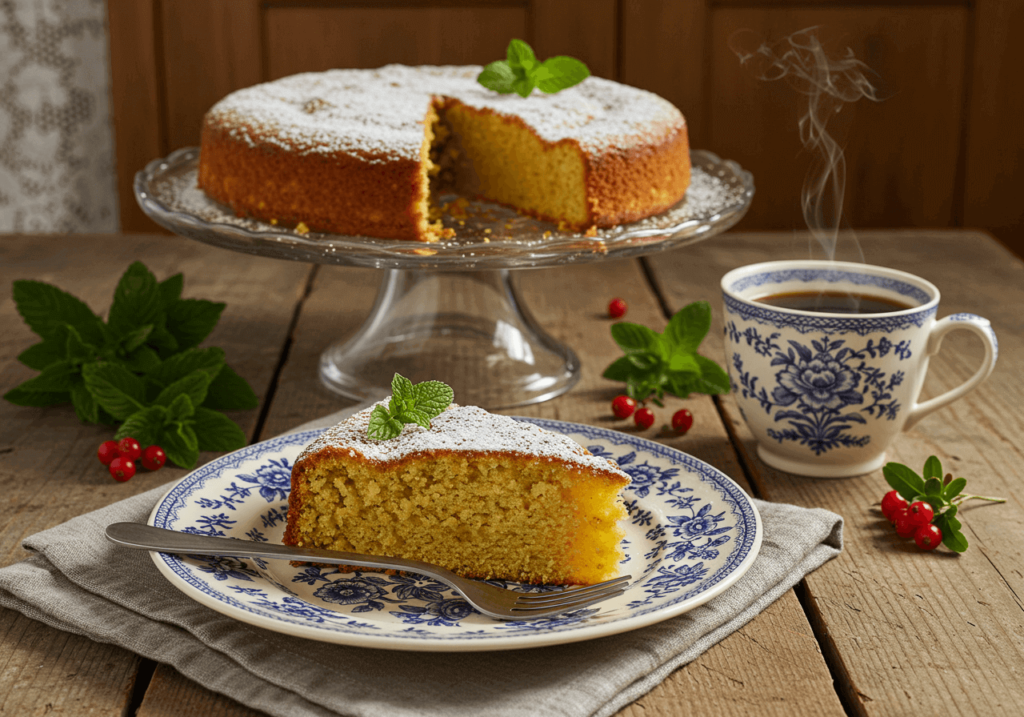There’s something truly heartwarming about bringing old-world flavors back to life and nothing captures that magic quite like a Vintage Swedish Cake Recipe. Rooted in Scandinavian tradition, these cakes are known for their delicate balance of flavor beautiful presentation and timeless charm. Whether passed down through generations or rediscovered from a grandmother’s cookbook, this recipe brings you a taste of Sweden’s rich baking heritage.With each taste, prepare to be transported back in time.
Table of Contents
The Charm of a Vintage Swedish Cake Recipe

There’s an undeniable allure in the simplicity and elegance of vintage Swedish cakes. These time-honored confections speak to more than just taste they evoke memory, emotion and tradition. Passed down through generations, such recipes carry the essence of a culture where warmth, family and seasonal rhythm shape everyday life.
Swedish cakes are often characterized by lightness, balance and a celebration of natural flavors. From the soft layers of a Prinsesstårta covered in pastel marzipan to the caramelized almond topping of a Toscakaka, each bite feels both nostalgic and comforting. In a world enamored with fleeting trends, these cakes offer something enduring: the sweet taste of continuity.
A Slice of History: Swedish Baking Through Time
Sweden’s baking heritage stretches back centuries, rooted in humble agrarian traditions and influenced by the Nordic climate. Long winters demanded hearty, shelf-stable ingredients rye flour, butter, sugar beet and preserved fruits while festive occasions called for indulgence and flair. As trade routes expanded, spices such as cardamom and cinnamon found their way into Swedish kitchens, becoming staples in many traditional cakes.
Baking became a social ritual and a domestic art by the 19th century. The institution of fika, a cherished Swedish coffee break, elevated home-baked goods to cultural significance. Cakes were no longer mere treats they were centrepieces of community and celebration. Many vintage recipes were handwritten, tucked into cookbooks and lovingly recreated for holidays, birthdays and long winter evenings.
Ingredients for a Classic Swedish Cake
Respect for genuine, premium ingredients is the first step in making a traditional Swedish cake. These components combine to create a dessert that is airy yet rich, rustic yet refined.
| Ingredient | Quantity | Notes |
|---|---|---|
| Unsalted Butter | 200g (7 oz) | Softened, for richness and moisture |
| Granulated Sugar | 180g (1 cup) | White sugar works best for a light crumb |
| Eggs | 3 large | Room temperature for better mixing |
| All-Purpose Flour | 200g (1 ½ cups) | Sifted for a smooth texture |
| Baking Powder | 2 tsp | Leavening agent for rise |
| Whole Milk | 100ml (⅓ cup) | Adds tenderness and cohesion |
| Vanilla Extract | 1 tsp | Traditional flavor enhancer |
| Ground Cardamom | ½ tsp | Optional but authentic Swedish touch |
| Salt | A pinch | Balances sweetness |
Optional Add-ins and Substitutes
While traditional recipes are beautiful in their purity, modern bakers often enjoy adding personal flair. A handful of chopped almonds, a dusting of pearl sugar or a swirl of lingonberry jam can add new dimensions without sacrificing authenticity. Substitute milk with sour cream for a richer texture or infuse the batter with lemon zest for a brighter profile. Gluten-free flour blends can be used but the cake may require additional moisture and careful handling.
Step-by-Step Guide: How to Make a Vintage Swedish Cake
- Preheat the Oven: Set your oven to 175°C (350°F). Line a 9-inch round cake pan with parchment paper or grease and flour it.
- Cream Butter and Sugar: In a large mixing bowl, beat the softened butter with sugar until pale and fluffy. This step is essential for achieving a light crumb.
- One by one, add the eggs, beating each one well before adding the next. The mixture should remain smooth and well-emulsified.
- Sift Dry Ingredients: In a separate bowl, sift together the flour, baking powder, salt and cardamom.
- Combine Wet and Dry: Add the dry ingredients to the butter mixture in three parts, alternating with the milk. Stir gently until just combined.
- Pour and Bake: Pour the batter into the pan that has been prepared. Bake for 30–35 minutes or until a toothpick inserted in the center comes out clean.
- Cool and Finish: Allow the cake to cool in the pan for 10 minutes before transferring it to a wire rack. If preferred, drizzle with a simple glaze or dust with powdered sugar.
Tips for Perfecting Your Vintage Cake
- Make sure that every component is at room temperature: because temperature matters. The batter’s ability to rise may be impacted by curdled eggs or cold butter.
- Do Not Overmix: Mixing too much after adding flour can lead to a dense cake. Stir gently and only until combined.
- Use Real Cardamom: For the best flavor, grind whole cardamom pods. Pre-ground varieties tend to lose potency.
- Check Early: Every oven varies slightly. Begin checking the cake 5 minutes before the suggested time to avoid overbaking.
Serving and Storage Suggestions
Vintage Swedish cake is best served with freshly brewed coffee or black tea during fika. It pairs wonderfully with lightly whipped cream and a spoonful of berry preserves, especially tart lingonberries or raspberries. For special occasions, it can be layered with custard or frosted with buttercream for a more festive presentation.
To store, wrap the cooled cake in parchment and keep it in an airtight container at room temperature for up to three days. For longer storage, freeze slices individually and thaw as needed though few leftovers ever last that long.
Final Thoughts on This Vintage Swedish Cake Recipe
Swedish baking is an ode to restraint, elegance, and heart. A Vintage Swedish Cake Recipe is more than a culinary project it’s an invitation to slow down, to honor tradition, and to savor something enduringly sweet. Whether you’re reviving a forgotten family favorite or discovering it for the first time, this cake offers a moment of connection to the past, to culture, and to the joy of baking something timeless.
FAQ
1. What makes a cake “vintage” in Swedish baking?
A cake is considered “vintage” when it reflects traditional Swedish baking methods and ingredients used in the early to mid-20th century. These recipes are often simple, use pantry staples like butter, sugar, flour, and cardamom, and are passed down through generations without modern shortcuts.
2. Can I use margarine instead of butter in a vintage Swedish cake?
While margarine can be used, authentic Swedish cakes traditionally rely on real butter for their rich flavor and tender crumb. Using butter preserves the original taste and texture that defines these vintage recipes.
3. Is cardamom essential in a Vintage Swedish Cake Recipe?
Cardamom is a classic spice in Swedish baking and adds a warm, slightly citrusy note that defines many traditional cakes. However, it’s optional. If you prefer a more neutral flavor, you can omit it or substitute with cinnamon or vanilla.
4. Can I make this Swedish cake gluten-free?
Yes all-purpose flour can be replaced with a gluten-free flour blend. Choose a blend that includes xanthan gum or add it separately to maintain the cake’s structure. Keep in mind the texture may vary slightly from the original.
5. What is the best way to store a Swedish vintage cake?
The cake can be kept for up to three days at room temperature in an airtight container. For longer storage, you can wrap it tightly in parchment and freeze for up to two months. Always thaw at room temperature for best texture.
6. Can I decorate a vintage Swedish cake for special occasions?
Absolutely. While traditionally served plain or with powdered sugar, you can decorate it with whipped cream, fresh berries, or a light glaze for holidays or gatherings. Keep the decoration elegant and simple to stay true to its vintage charm.
